Orthochromatic vs Panchromatic film – A Photo Comparison
After many requests about the difference between orthochromatic and panchromatic films, we headed out and shot a roll of Panchromatic film (Kodak TMAX 100 ) and two different orthochromatic stocks (Rollei Ortho 25 Plus & Ilford Ortho Plus 80).
Orthochromatic film is simply made with silver halide crystals, which are naturally blue-sensitive. First produced in 1873, early film photos and movies used orthochromatic film, which is the reason why skies in early photographs are almost always white: being blue, they overexposed easily. The orthochromatic film couldn’t see a red light, so anything red would turn black.
As technology and chemistry evolved, Panchromatic film was introduced around 1906 a was created with sensitizing dyes to extend the silver halide crystal sensitivity into the green and red portions of the spectrum. Panchromatic, meaning wide color, is now the popularly used film, capturing a wider spectrum of light, rending B&W tones close to what we see in everyday life.
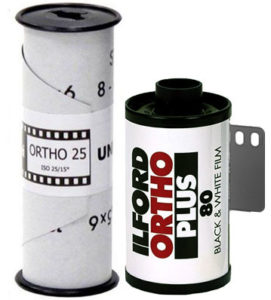 Ilford Ortho Plus 80 Ilford Ortho Plus 80 |
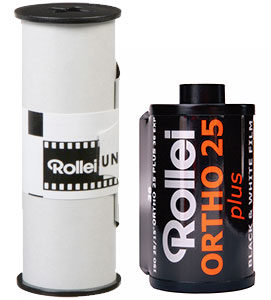 Rollei Ortho 25 Plus Rollei Ortho 25 Plus |
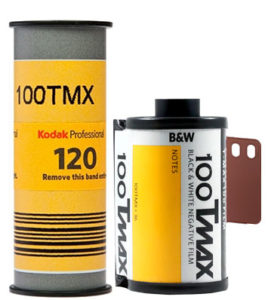 Kodak TMAX 100 |

What’s the Best Film?
The most comprehensive index of film types; characteristics, examples, and reviews.
View Index
This history of B&W film as it evolves from Orthochromatic to Panchromatic
Orthochromatic films were first produced by Hermann Wilhelm Vogel in 1873 and were blue or green-sensitive and unable to capture reds. The early movies used ortho film and were challenged by capturing actors because the warm skin tone would appear dark. Movie producers would control the gray levels by carefully selecting locations and using greasepaint makeup and powder to cover up warm skin tones, lightening up faces on ortho film.
An early German chemist Hermann Vogel found that by adding dyes to the film emulsions would widen the available spectrum into the greens and eventually to the oranges. In the 1900s, Vogel’s technique was extended to create panchromatic film, capturing the full spectrum. The switch from ortho to pano was slow due to cost and because panchromatic film, being sensitive to red light, couldn’t be developing with a red safelight, but had to be developed in total darkness.
Still photography panchromatic films and plates become available commercially in 1906. While The Darkroom will develop any type of B&W film, most B&W films available today are panchromatic. Film variations are still being introduced to capturing different wavelengths to product different contrast levels for specialized applications or to be experimental. Films designed for aerial photography into the IR spectrum can cut through the haze and enhancing the green shades in vegetation for surveys and scientific studies.



 My Account
My Account


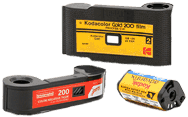






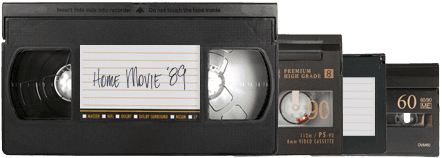

 Gift Cards
Gift Cards Film Index
Film Index FAQ
FAQ






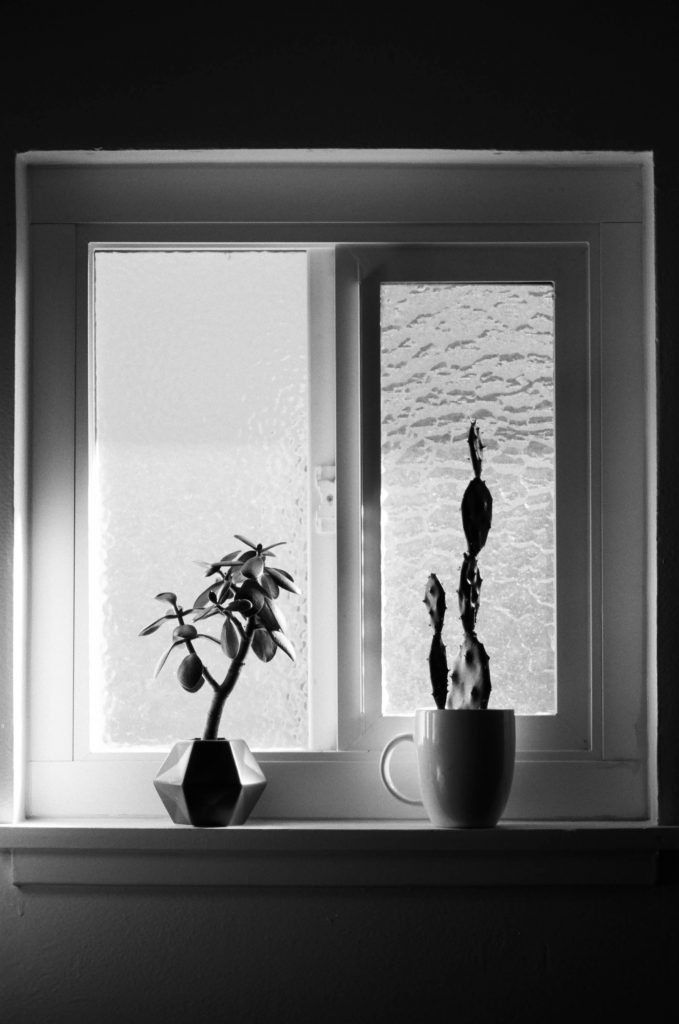
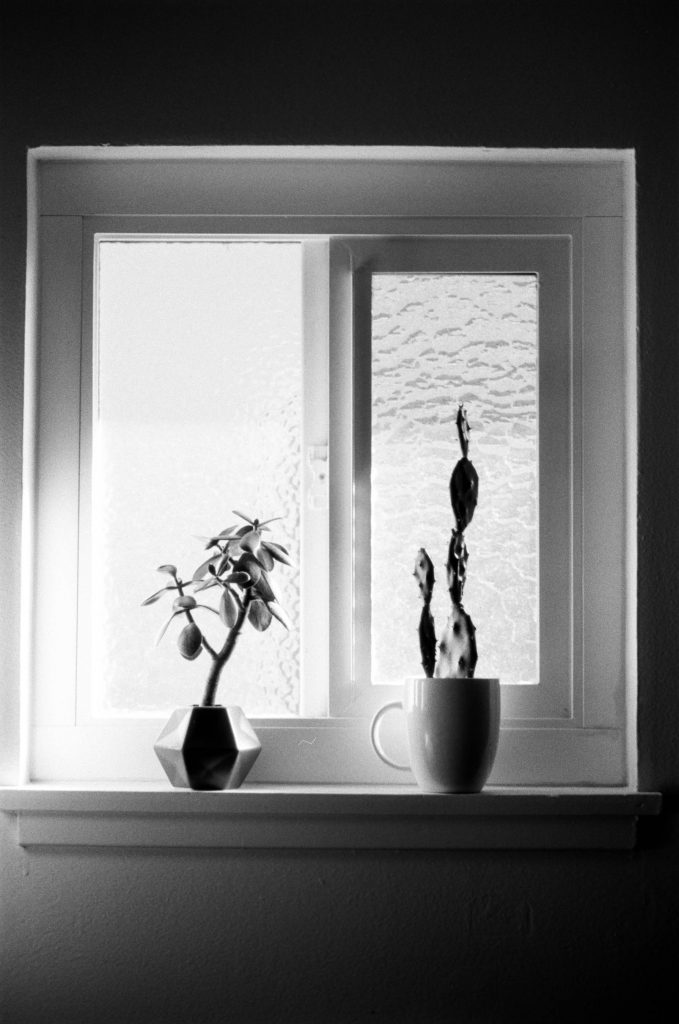
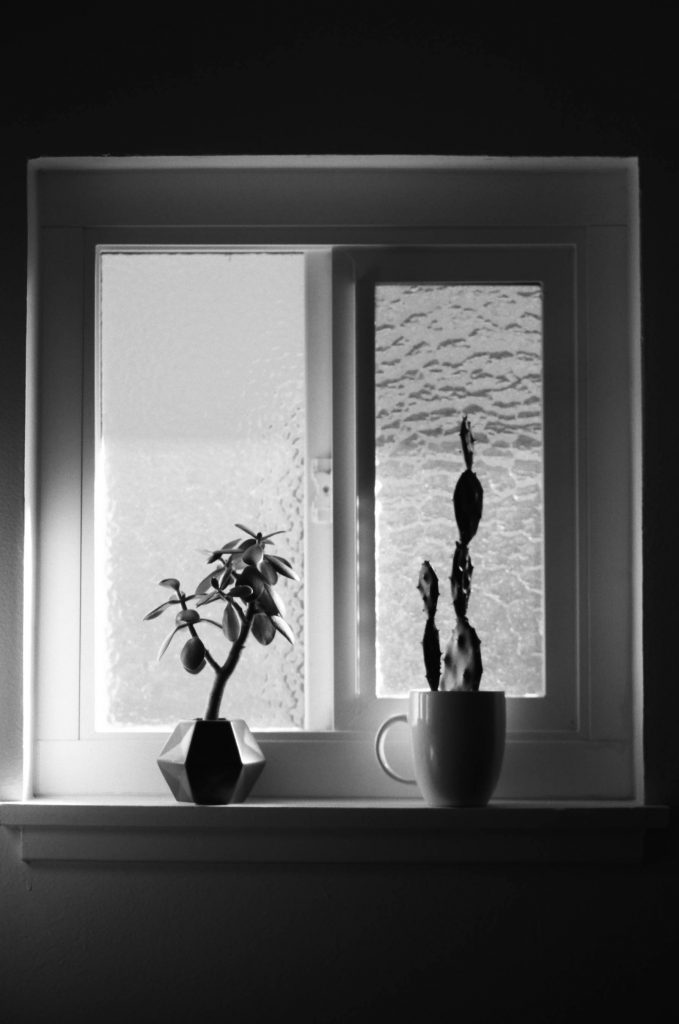
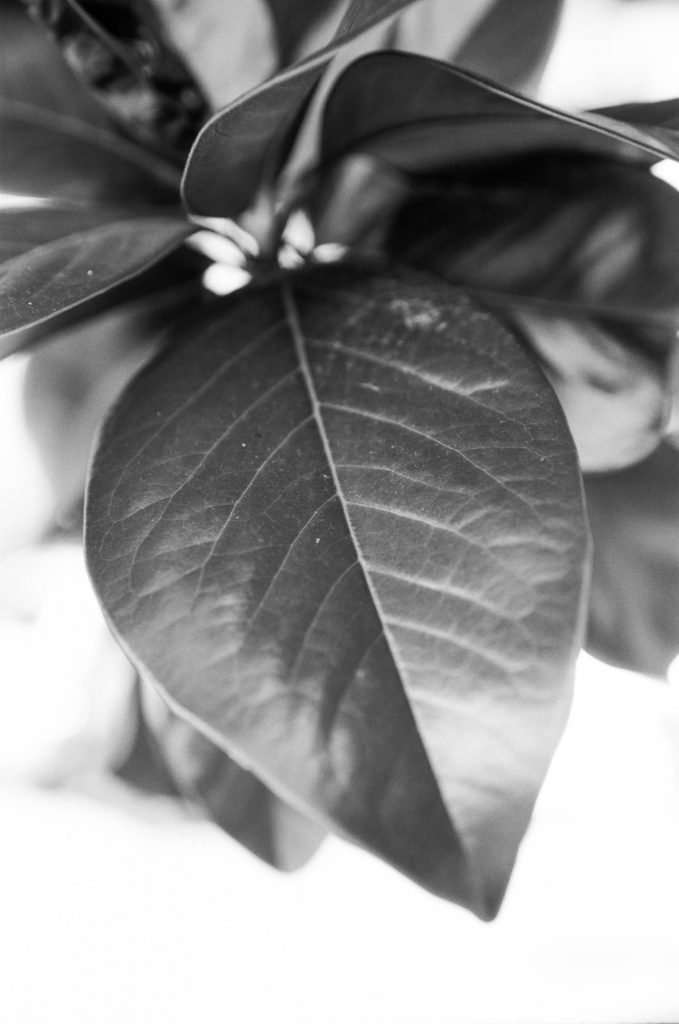
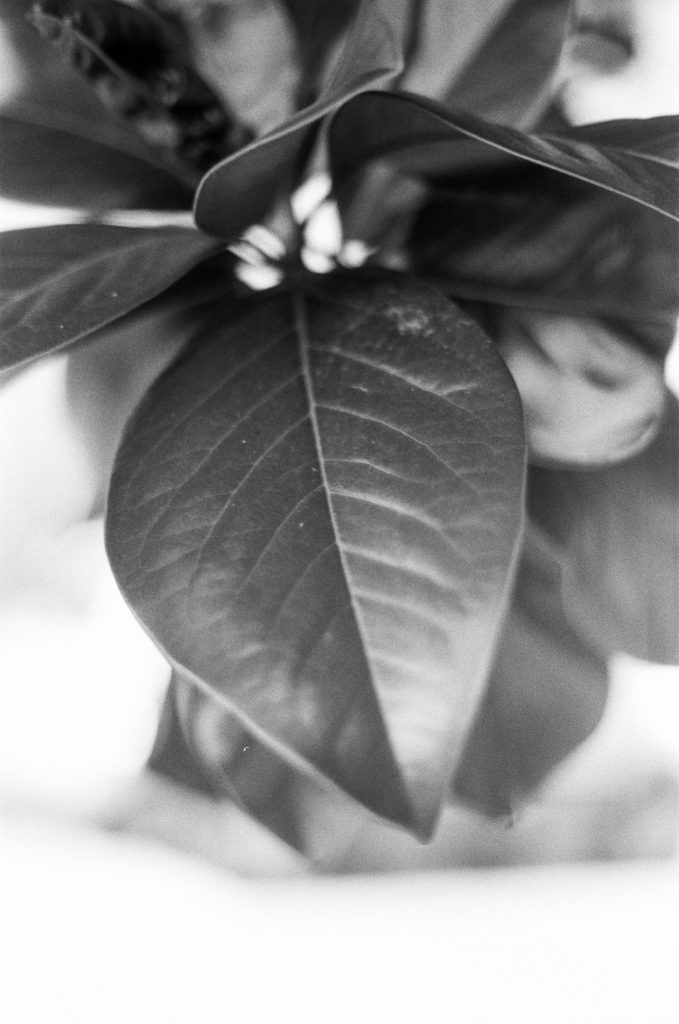
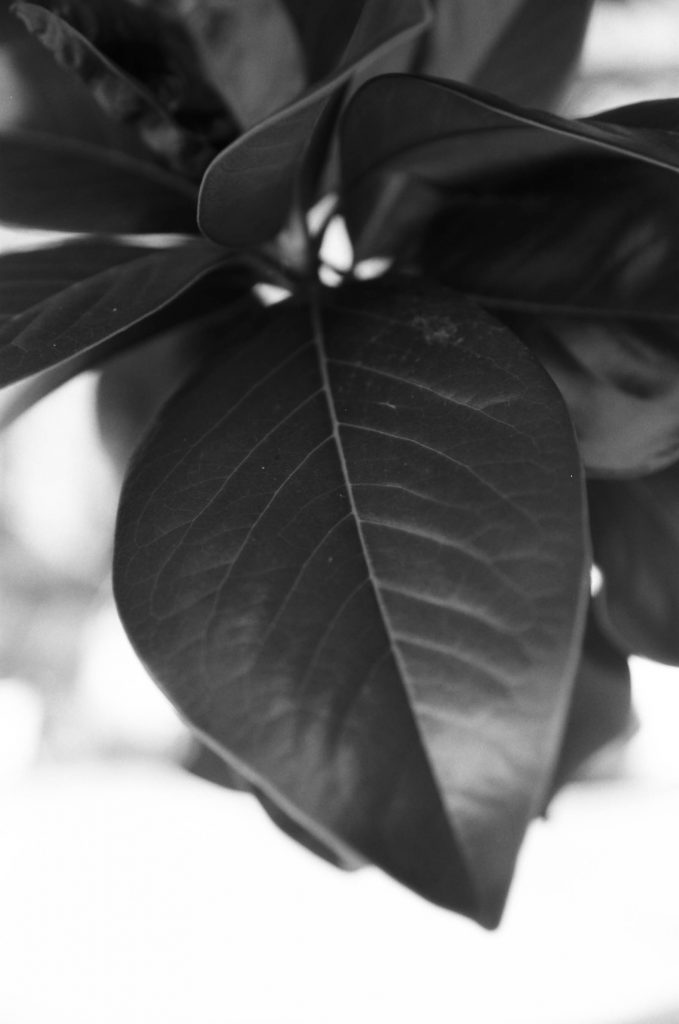




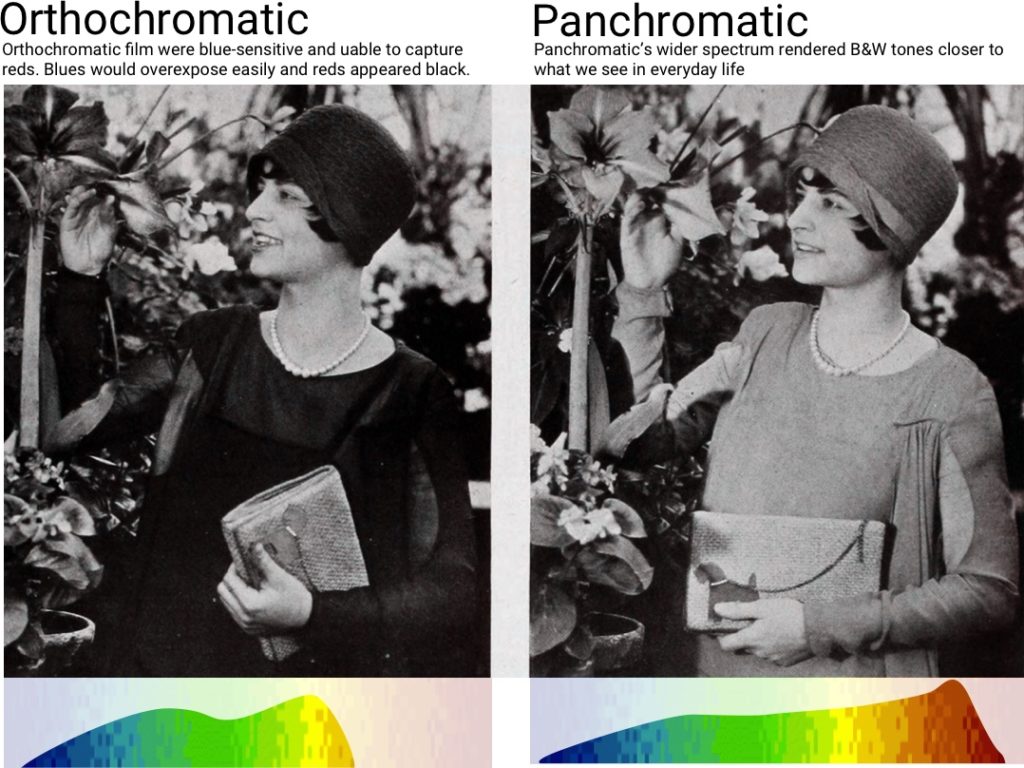
This post was SOOOO helpful but i would love an acros ii in the mix too since it’s less red sensitive! Thanks for these!
I have an unopened roll of 127 Kodak ortho “speed” film that expired in 1920 that appears to be in excellent condition for it’s age. What ISO (ASA) value would you recommend I shoot it at? I will be using a 127 Baby Rolleiflex because of it’s unlimited controls. I then plan to have you guys process it.
Thanks in advance,
Charles
I would strongly recommend you try available ortho films first and dish process them yourself, by hand in a darkroom with minimal correct red safelight. When blacks appear through the milky emulsion, rinse and fix. I doubt whether you will find 127 films readily. The last popular ortho film was the EFKA sold as Jessop brand upto 2004, latterly as Maco or Rollei.(and 25 iso). Any 1920 film would probably be less than half that.
This is a late reply, but wow, Charles! I wouldn’t use the film at all because the emulsion is 100 years old, so it is very, very fragile. It also has extreme value, dollar-wise, as an unused item! It has so much more intrinsic historical value, rather than photographic value. Take it to a museum and see if they would purchase it!
You are a BIG Lama. Please go back to School.
Plain silver halid emulsion (non-orthochromatic) is good sensitive to blue only.
Orthochromatic emulsion is sensitive to small part of blue, good sensitive to green and yelow.
Panchromatic emulsion is good sensitive to green, yelow and red.
Ortho-panchromatic, also Isochromatic is sensitive to small part of blue, good sensitive to green, yelow and red.
Did a check, but in literature there is no such thing as ortho-panchromatic film, just orthochromatic and panchromatic as mentioned in the article.
eg:
https://www.researchgate.net/publication/283344701_PHOTOGRAPHIC_EMULSION_PREPARATION_AND_CHARACTERISTIC_STUDIES_OF_PANCHROMATIC_FILM
Hey Michal – What the F* is a lama?
Its kinda like ….imagine a mini camel….wth fleece. Yeah think a sheep with a camel neck. Its like spin mop with a feather duster taped to the other end, that spits. The other kind of lama is Muhatmar Ghandi. Prolly spelled his name wrong
I was curious about the iso- prefix. I found this reference but no indication of what film has these properties: https://camerapedia.fandom.com/wiki/Isochromatic
Your description of orthochromatic films is incorrect. You should probably consider doing more reading and then correcting this page.
A very late response but I recently tried some Ortho film for fun. Unfortunately, all the shots I took with my usual orange filter (for the sky) came out unusably underexposed! If only I’d read this first… The shots without a filter were fine of course.
I really like the look of that Ortho 80. In some of the portraits it seems to have best shadow detail of the three.
It would be nice to see a version of each series in color. Also a scene with a woman in a red dress and red lipstick with a blue sky background would have been interesting